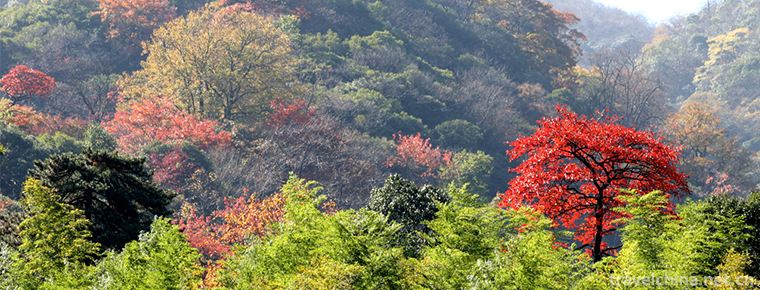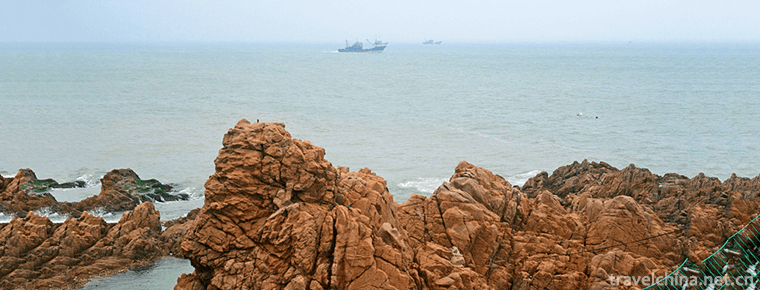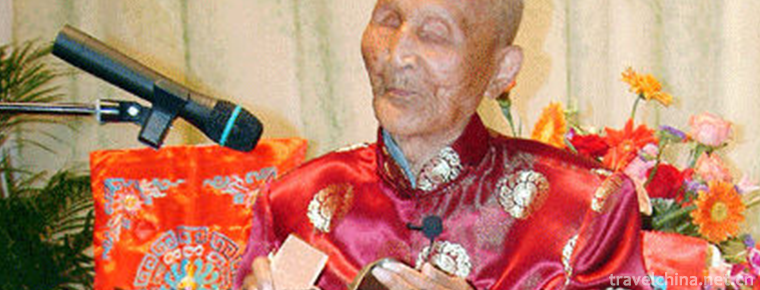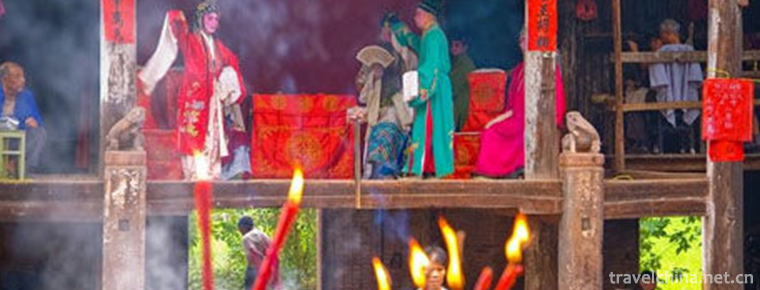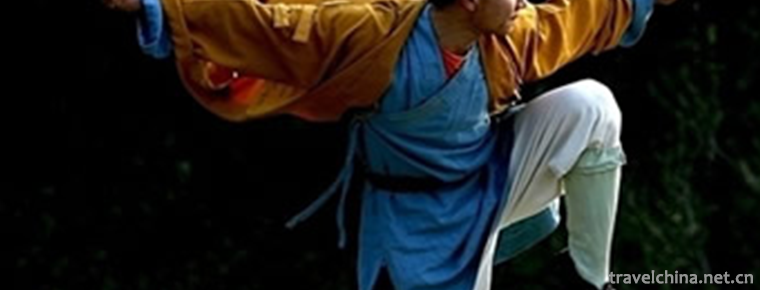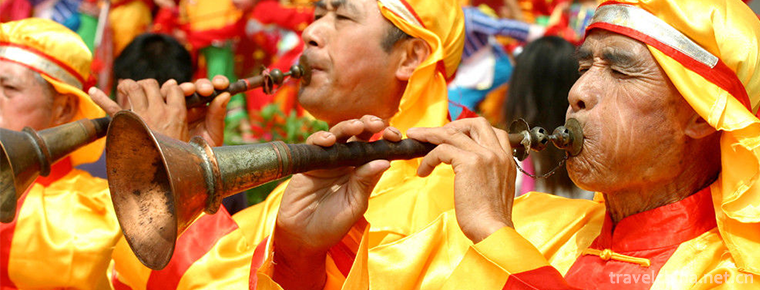Guilin fishing drum
Guilin fishing drum
Guilin fishing drum, commonly known as sentiment, is the local traditional rap and singing art of Guilin. The Song Dynasty was introduced into Guilin from the north, and formed in combination with the characteristics of Guilin dialect. It was often used in narrative works, and it was very touching.
In 2014, Guilin fishing drums declared by Guilin City of Guangxi Zhuang Autonomous Region were listed in the fourth batch of representative projects of national intangible cultural heritage approved by the State Council.
historical origin
Guilin Fishing Drum, Guqu Classified Songs. Also known as Guangxi Fishing Drum. It is one of the representative folk rap art forms in Guangxi Zhuang Autonomous Region. It evolved from Taoist sentiment. Affected by Hunan fishing drum. The formation of rap art with strong local characteristics was in the early 1950s, with artist Wang Ren and self-compiled modern repertoire "Wang Lao Tzu Learning Culture" as the representative work. Traditional drum singing form is simple, one person "singles", self-tapping and self-singing. Nowadays, it is more flexible and diversified, with two or more people "walking singing", mainly singing, supplemented by performance.
In the past, there were no other instruments except drums and boards, but now they gradually developed into folk accompaniment modes including Zhongruan or Pipa.
The Origin and Development of Guilin Fishing Drum
Guilin has a long history. Since Qin Shihuang excavated Lingqu to communicate the Yangtze River system with the Pearl River system, the Central Plains culture has been continuously introduced into Guilin, forming a folk culture with its own characteristics. Guilin fishing drum is one of the representatives. In the Song Dynasty, Zhou Tuofei, Ren Tongju of Guilin, recorded the scene of local people singing and loving music in "Answer to Pingnan Music of the Outer Ridge Dynasty": "People in counties of Guangxi are able to enjoy music together, suburban villages, sacrificial marriages and funerals, all of them need music, although farming fields must be accompanied by oral music, and the sound of drums and flutes should be heard in the sun." The description here seems to be the scene of Guilin people singing fishing drums.
Guilin fishing drum, which originated from ancient narrative and singing, is named for the accompaniment musical instrument "fishing drum". It is one of the representative forms of Guangxi's traditional music. But it has also experienced a long historical process for fishing drums to really enter thousands of families in Guilin. Mr. Su Shaofen introduced that the narrative, singing and emotional performance form of Guilin fishing drum was deeply influenced by Hunan fishing drum. During the late Ming and early Qing Dynasties and the Republic of China, Hunan fishing drum artists sang fishing drums in Guilin and settled in Guilin, opening the pioneer of Guilin fishing drums. Since then, the drums of fishing drums have rippled in the villages of Yao Zhai in Jingfang, Guilin. It is said that in the late Qing Dynasty and early Republic of China, some halls invited folk artists to open a singing book and sing a story for several days. Instead of decreasing, more and more people listened to it. Some people went home to make fishing drums and sang and entertained themselves at home.
In the 1930s, in the busy places of Guilin market and wharf, fishing drum artists could be seen beating fishing drums and singing. At that time, the tune was relatively single, but the content was very attractive. A song book was sung for several months, and the audience would listen to it endlessly. After listening to that simple tune for a long time, they could hum a few sentences. In the 1930s, Wang Renhe, a famous blind artist in Guilin at that time, learned the drum from the former Qiyang fishing drum artists in Hunan Province who had settled in Guilin and the old drum artists in Xing'an, Guilin. On the basis of mastering the basic musical form of the drum, he fully tapped the potential of this art and formed the rap art with strong local characteristics of the drum. Style. After years of exploration and inheritance of fishing drum music, he has widely absorbed the elements of local folk art and created a variety of northern and southern roadblocks. The northern road expresses clear, cheerful, high-spirited and exciting moods. The melodies are mostly in 1653 turns, while the Southern Road expresses melancholy, depression, contemplation and indignation. The melodies are mostly in 3265 turns. In early 1953, Wang Renhe created and sang Guilin Fish Drum Modern repertoire "Wang Lao Tzu Learning Culture" and became a masterpiece. Later, he created and sang songs such as "Catching Bandits on Water" which won five awards in the Guangzhou Military Region Literature and Art Festival, which made Guilin Fishing Drum famous. It gradually spread to northern, central and eastern parts of Guangxi, showing its unique splendor.
Guilin fishing drum is still welcomed by the local people in northern Guilin. Local people invite drum artists to sing fishing drums on occasions such as the death of the elderly or the celebration of the elderly and the marriage of young people. Many villages in northern Guangxi have temple fairs. In traditional temple fairs, drum and fishing artists are invited to perform. In the 1980s, someone collected a woodcut edition of "Sangu Ji", which was preserved by Li Qiutian in Guangxu for 33 years. This six-hundred-sentence-long "Sangu Ji" is almost the same as "Liang Zhu Story" and "Bai Snake Biography" in the minds of the people in Xing'an, Guanyang and Yuyuan counties in northern Guizhou. Everyone knows it. Guilin fishing drum also because of such performance occasions, the songs sung are more reflective of work and life works. These works are close to the people's lives, easy to arouse resonance, and therefore can be sung forever.
Inheritance significance
Guilin Fishing Drum has a history of more than 300 years. It was listed in the third batch of representative items of intangible cultural heritage in 2010. Guilin fishing drum has accumulated a very rich cultural connotation since its formation, and it has an inestimable value.
Su Shaofen said that Guilin fishing drum is an important manifestation of Guilin's traditional culture and a "living fossil" of multi-regional cultural integration. It reflects the various life forms of ancient social life, which is of great significance for the study of the life history and the history of folk art in Guangxi.
Guilin fishing drum is one of the representative folk music forms in Guangxi. It absorbs the music elements of Daoqing, Qiyang and Quanzhou fishing drums in Hubei Province, and has its own style. The contents of the songs have a strong cultural background, enriching the history of Guangxi folk art and music. At the same time, Guilin Yugu, as the crystallization of folk opera in the Pearl River Basin and the Yangtze River Basin, records and verifies the history of mutual dissemination, collision and blending among the Central Plains culture, Chu culture and Luoyue culture. There is a popular saying in Guilin: fishing drums, singing sentiments. The absorption of Guilin fishing drum to other folk music and the characteristics of drawing lessons from it are vividly expressed. In the development of Guilin fishing drum, besides the integration and absorption of local folk songs, rap and opera music, it is especially worth mentioning that its origin is inextricably linked with Chu culture. Its genealogy reflects the evolution of this folk art. It depicts the cultural characteristics of Guilin people's eclecticism. In addition, the lively image of Guilin Yugu's lyrics has a high literary value and profound social, historical and cultural research value.
Inheritance and protection
In order to protect and inherit Guilin's fishing drum, in the early 1980s, Guilin Museum of Mass Art and Guilin's folk artists began to collect, collate and study Guilin's local traditional art, and published "Guilin's Fishing Drum Traditional Music, Excellent Works Collection". In the book, there are 3 long classical repertoires, 4 middle parts and 12 original excellent works of Guilin fishing drum, which basically cover and represent the highest level of Guilin fishing drum art.
At the lecture, Mr. Li Kan, who won the Peony Award for Chinese Quyi and was awarded the title of "Outstanding Contribution to Quyi Artist" for 60 years in New China Quyi, shared his experience with the teachers and students on the writing of Yugu lyrics. The creators of Guilin fishing drums should constantly bring forth new ideas in response to the needs of the times.
The basic attribute of Quyi is to sing stories, and fishing drums are no exception. Guilin fishing drum is developed from Taoist sentiment. As the saying goes, "fishing drum, singing Taoist sentiment", that is to say, to link the two. From Yuan Dynasty, Ming Dynasty to Qing Dynasty, this kind of singing form gradually developed to sing official cases, myths and folk stories, which changed greatly in content. After the founding of New China, literary and artistic workers inherited and developed the tradition of "fishing drums with talking and singing". They were more stereotyped to sing stories or events with plots of characters, timely reflecting our rich and colorful social life, and were welcomed by the masses.
Teacher Li Kan said that it is usually about ten minutes to sing a Guilin fishing drum passage (if the TV show is better than seven minutes), and it is enough to write fifty or sixty lines. Because of the short length, this requires that the content of the drum can only intercept a cross-section of life, and this cross-section should be storytelling. If we want to reflect the essence of society profoundly, this cross-section is also better able to contact the contradictions and conflicts of society, so that the work has a typical significance, see the thought, see the style.


-
Fish in sour soup
Sour soup fish is a traditional dish of Miao nationality in Guizhou. According to textual research, this dish originated from the Yashuang area of Leidong Town, Liping County.
Views: 209 Time 2018-11-05 -
Yunwushan Scenic Area
Yunwushan Scenic Spot is located in Paulownia Shop in the northwest of Huangpi District. It enjoys the reputation of "Xiling Resort Area, North Chu Famous Area, Beixi Border Barrier and Handizush.
Views: 182 Time 2018-12-22 -
Chengshantou Scenic Spot
Chengshantou Scenic Spot is located at the easternmost end of Chengshan Mountains in Rongcheng City, Shandong Province, so it is named Chengshantou. Chengshantou is 200 meters above sea level.
Views: 187 Time 2019-01-05 -
Little Three Gorges
Wushan Xiaoxiao Three Gorges is the general name of Changtan Gorge, Qinwang Gorge and Sanzhuang Gorge on Madu River, a tributary of Dicuixia of Daning River. Wushan Xiaoxiao Three Gorges is known as t.
Views: 190 Time 2019-02-25 -
Jia Jia Quan
Amaranth, also known as Amaranth, Amaranth hammer, one of the traditional Chinese boxing. It was founded by Mr. Junai Zhou (1724-1783) in Heshui County, Zhengzhou, in the reign of Qianlong in the Qing.
Views: 225 Time 2019-04-16 -
Sing the news
Singing news is a traditional local opera popular in eastern Zhejiang, especially in Fenghua, Beilun, Zhenhai, Yinzhou and Xiangshan. Singing news has a long history, about a hundred years ago.
Views: 201 Time 2019-04-16 -
Qiyang Opera
Qi Opera is one of the traditional local dramas in Hunan Province. It is also called Qiyang Band, Qiyang Opera in the early years of the Republic of China, and Qiyang Qidong Opera in the folk.
Views: 95 Time 2019-06-10 -
Shaolin Kung Fu
Shaolin Kungfu, also known as Shaolin Wushu, is one of the famous schools of Wushu in China. It has a long history and profound influence. It is an important part of Chinese traditional Wushu. The mos.
Views: 166 Time 2019-06-14 -
Sun Bin quan
Sun Bin Quan is an ancient and rare traditional boxing in Shandong Province. Its connotation is broad and profound, which was created by Sun Bin, a military strategist in the Spring and Autumn Period .
Views: 163 Time 2019-06-17 -
Suona Art
Suona art is a manifestation of traditional Chinese folk culture. In 2006, Qinyang City of Henan Province and Qingyang City of Gansu Province applied for intangible cultural heritage. Its basic musica.
Views: 124 Time 2019-06-17 -
Meishan climate
Meishan city is located in the middle and low latitudes, located in the west of Sichuan Basin and the middle reaches of Minjiang River. It is characterized by the alternation of sea land monsoon every year. It has four distinct seasons, mild climate, abundant rainfall,.
Views: 334 Time 2020-12-18 -
Dazhous first industry
In 2019, the annual grain planting area of Dazhou city is 556900 hectares, an increase of 0.3% over the previous year. Among them, rice was 191500 ha, an increase of 0.2%; maize was 137500 ha, an increase of 0.9%; potato was 162000 ha, a decreas.
Views: 191 Time 2020-12-20

